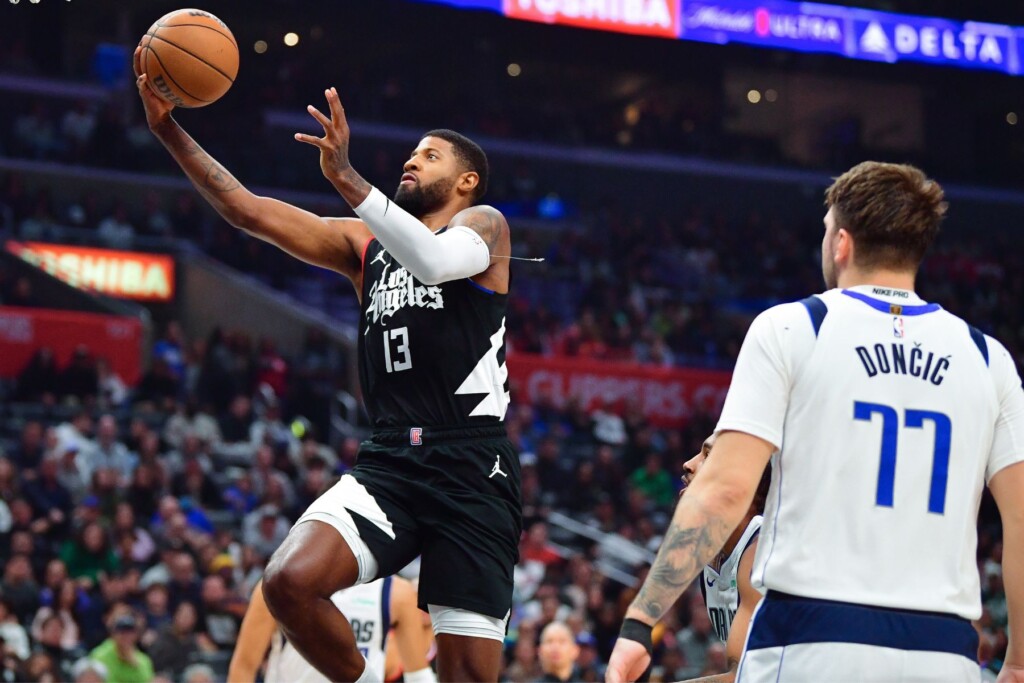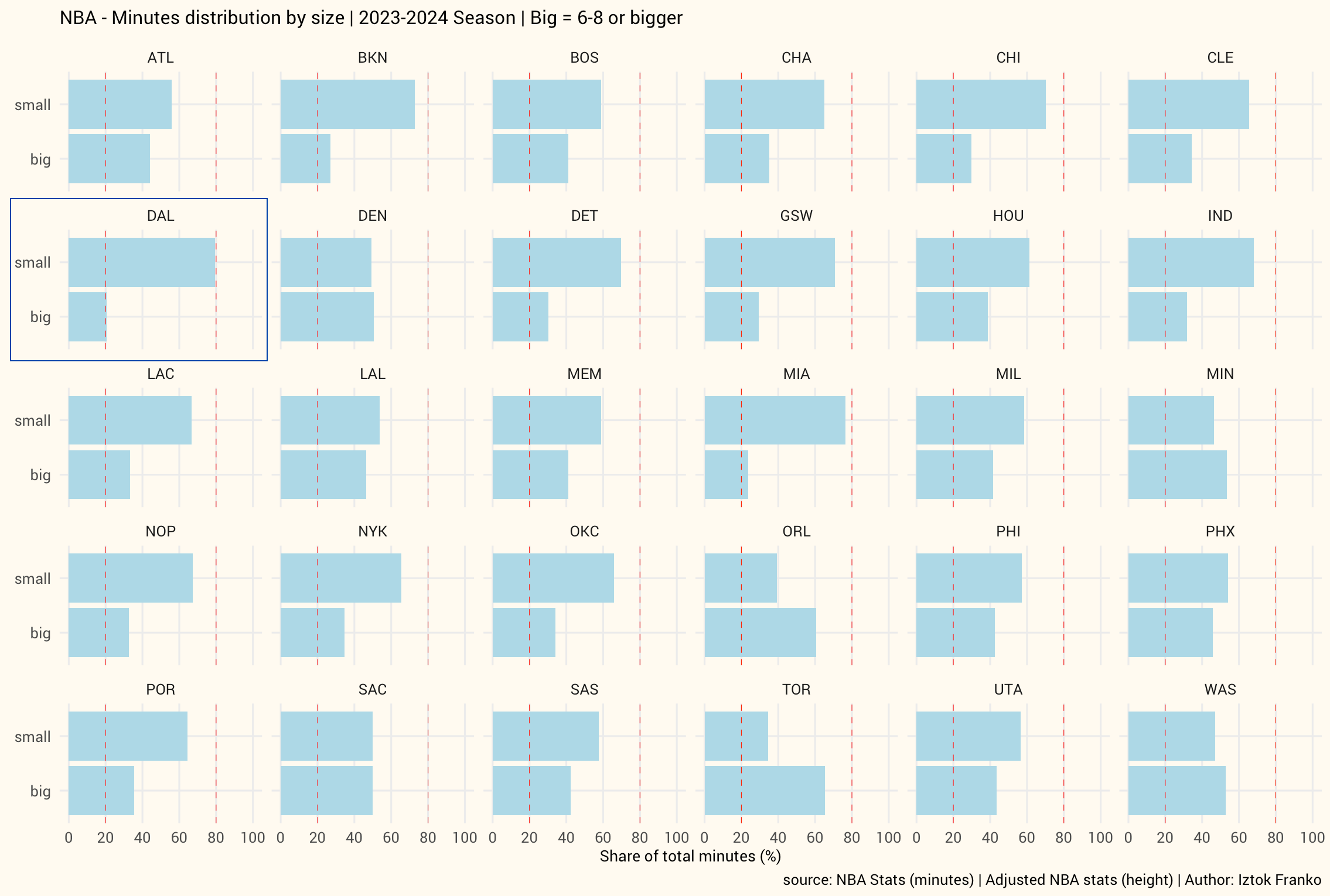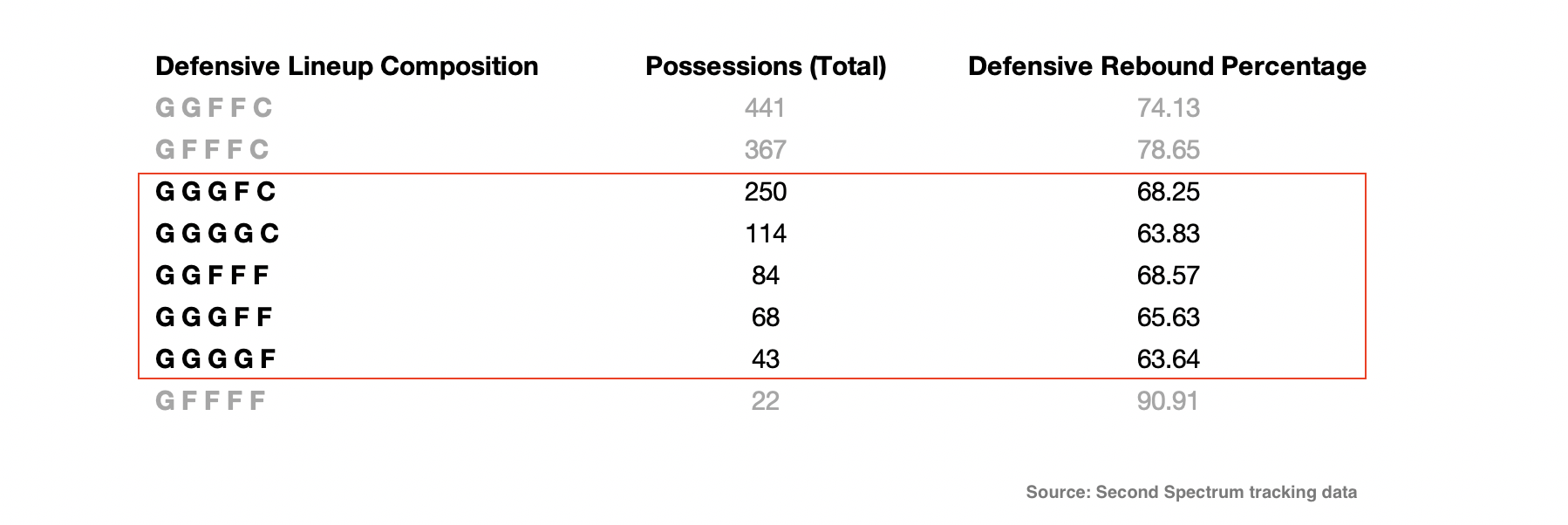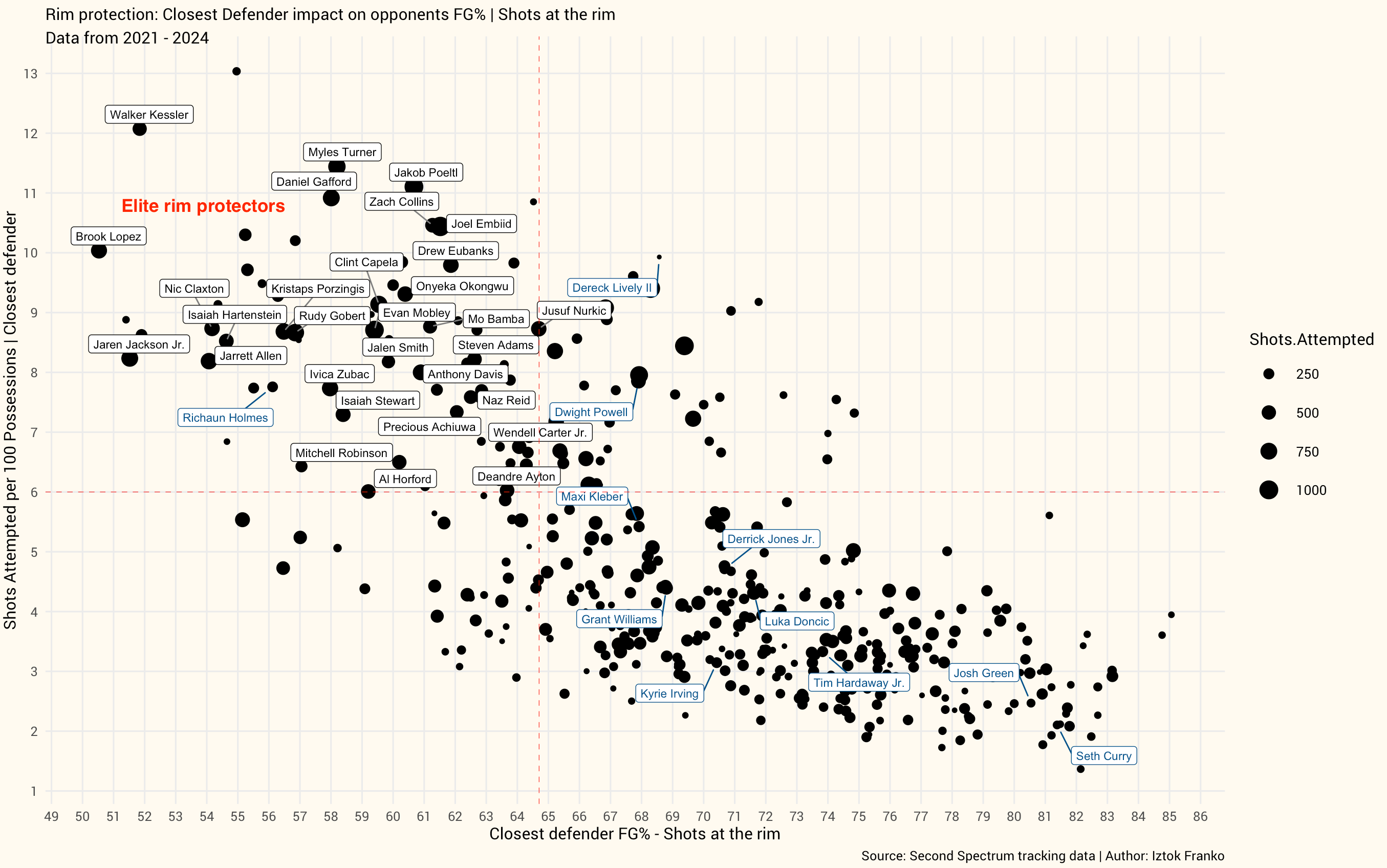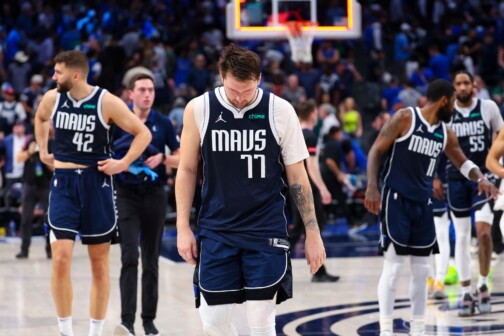December is just around the corner, and for Europeans like me, that means the arrival of a time-honored television sketch called “Dinner for One.” In it, a woman named Miss Sophie intends to celebrate her 90th birthday as she has so many prior, by inviting her four closest friends to an extravagant, multi-course dinner. One problem: Sophie has outlived every one of them.
A pragmatic woman would pivot to a different kind of celebration. Miss Sophie is not a pragmatic woman. And so, over the life of the 18-minute sketch, her dutiful butler, James, serves all the courses to Miss Sophie and her four imaginary friends, whom James takes it upon himself to impersonate, too.
Before each dish, James asks what became the enduring line: “The same procedure as last year, Miss Sophie?”
Without fail, Miss Sophie replies, “The same procedure as every year, James.”
And after a month of Dallas Mavericks basketball, I feel this deeply. Because, once again, in what has become a very unpleasant procedure, I am sitting alone at a table, writing a column in late November about their disastrous defense.
After starting off strong by winning eight of their first 10 games, things are getting bleak. Dallas has lost four of its last six, and even more concerning, three of those defeats were convincing blowouts. In those six games, they allowed opponents to score at a sky-high rate of 123 points per 100 possessions.
So, in keeping with holiday tradition, I now must ask my usual question: is there any hope for the Mavericks’ defense?
This year, the question is even more puzzling. It’s difficult to comprehend how a team that added two defensive-minded players, Grant Williams and Derrick Jones Jr., along with a young, athletic rim protector in rookie Dereck Lively II, can be performing worse on defense than last season’s version of the defenseless Mavericks. According to Cleaning the Glass, the Mavericks rank 25th in defense, two spots lower than they did at the end of the 2022-23 season.
Three major red flags, or symptoms, highlight the Mavericks’ defensive struggles: protecting the paint, rebounding, and transition defense.
The Mavericks allow the third-most points in the paint, and they are the worst in the league in both opponent field goal percentage at the rim and in the paint. Consider these performances of opposing bigs in the paint in four of the losses: Giannis Antetokounmpo went 16 of 17, Domantas Sabonis 12 of 12, Nikola Jokic 11 of 12, and Pascal Siakam 15 of 17. Coupled with their poor transition defense, where they rank third-worst in points allowed per 100 possessions, and the Mavericks are clearly giving up a lot of high-percentage shots. And on the rare occasions when those shots don’t go in, they struggle to secure rebounds: they rank in the bottom third in the NBA in both opponent offensive rebound percentage (21st) and opponent putbacks (20th).
But if these jarring numbers are just symptoms of deeper issues, what are the actual causes? More importantly, can the Mavericks find a cure as the season progresses?
Let’s start with identifying the causes.
The Mavericks’ problems with paint defense and rebounding have one common theme, which was a major concern last season and wasn’t adequately addressed in the offseason: a lack of size. Saying this team is too small is an understatement. When you look at the number of minutes played by players shorter than 6-foot-8, the Mavericks come out as the smallest team in the NBA, with almost 80 percent of their playing time allocated to such players.
Maxi Kleber’s early-season injury has magnified the size problem. But last season served as a sober reminder that relying on the soon-to-be 32-year-old injury-prone German is no longer a sustainable strategy, even if he still provides badly needed length at 6-foot-10. While the additions of Williams and Jones help in other areas, it doesn’t change the fact that both are undersized forwards. Playing the 6-foot-6 Williams for 30 minutes per night in the frontcourt means the Mavericks usually face an uphill battle in rebounding and contesting shots in the paint.
And to be fair, hoping that a 19-year-old rookie center (more on Lively in a minute) and an undersized power forward could rejuvenate the struggling defense was too much of an ask to begin with. Lively and Williams are not the problem; defense with both on the floor is at around league average, and it’s actually good when you add Jones to the mix. The problems cascade once these three are substituted with smaller players from the bench. The drop-off in size and length becomes evident when Williams and Jones are substituted with Tim Hardaway Jr., Josh Green, and Dante Exum, who fill most of the bench minutes at those positions and are essentially guards masquerading as forwards,. Once you add the drop-off from Lively to Dwight Powell and Richaun Holmes (both undersized for the center position), the Mavericks go from small to tiny. This is even more problematic given that the guard rotation, besides Luka Doncic, consists of 6-foot-2 Kyrie Irving, 6-foot-1 Seth Curry, and 6-foot-4 Jaden Hardy.
That offseason reshuffle only did so much to balance what remains a guard-heavy, offensively minded roster. This is a key reason why Jason Kidd often opts for guard-heavy units, or units without a true center, for 40 percent of the time. When the shots are falling, these lineups are super explosive and hard to stop. However, they struggle against better teams, can’t get stops, and get crushed on the glass, especially at the defensive end.
Playing longer, more defensive-oriented lineups is the most obvious quick fix to improve the defense. It’s not rocket science to suggest that the Mavericks should surround Doncic and Irving with capable defenders to fill the holes.
For the sake of my analysis, I classified Lively, Williams, Jones, Kleber, Exum, and Green as positive defenders in the rotation. (By most metrics Green has been one of the worst defenders against ball handlers in pick-and-roll situations in the NBA this season, but I gave him a pass due to his ability to close out and win 50-50 balls.) My lineup data indicates that the Mavericks play units with two or three of these defenders for the majority of their possessions. What is striking is that the offensive rating remains consistent, but there’s a huge 10-point per 100 possession improvement on defense in lineups that feature an additional defender. Smaller subsets of lineup data featuring Doncic or Irving, or both, surrounded by three defenders consistently produce the same results. Simply put, when the Mavericks play three competent defenders alongside their two stars, the defense is not that bad.
Hardaway epitomizes the predicament the Mavericks face with their small-ball approach. The defense concedes an additional 13.2 points per 100 possessions with him on the floor, and that’s not solely because of his subpar defense. It’s also because almost all of his minutes are played alongside two other guards, with a four-guard setup featured on 30 percent of his time. It’s a challenge to build a competent defense around Doncic (although we saw it happen during the 2021-22 season). It’s even harder to do it with both Doncic and Irving. And I believe it’s near impossible with Doncic, Irving, and Hardaway in a prominent role. (The 31-year-old ranks third on the team in minutes.) None of them provides any on ball pressure or disruption in pick-and-roll situations. This lack of resistance opens up driving lanes in the paint, and the backbone is not there to resist that kind of pressure.
Speaking of a defensive backbone, this brings us to Lively. It’s quite telling about the state of the Mavericks’ center position that a 19-year-old with just 700 minutes logged in his one season at Duke immediately stepped in to become a starter and the best interior option. Lively’s on/off numbers reveal a significant difference when he’s off the floor. However, this doesn’t necessarily mean he’s a game-changing defender—not yet, anyway. It’s more of an indication of the sizable gap from him to his backup options.
Lively’s biggest impact is in deterring shots, rather than contesting them. Opponents take far fewer shots at the rim when Lively is on the floor, but when they do, they convert them at a high rate. Although the sample size is still small (only 70 shots at the rim with Lively as the closest defender), the data indicates he ranks high (at the top of my chart) in terms of how many shots he contests at the rim. In terms of altering shots, however, he is still far from reaching the upper left corner of the chart, where elite paint protectors including Jaren Jackson Jr., Brook Lopez, and Walker Kessler reside.
What’s more indicative of the Mavericks’ problems is that all other players except Holmes ,who peaked two years ago and seems to have lost some of his athletic prowess, are on the wrong side of the chart.
The Mavericks are hopeful that Lively will steadily improve with more experience this season, evolving into the rim protector he was projected to be out of college. I’ve written plenty of words about the decade-long drought of elite defensive talent in Dallas: the last Maverick to make the All-Defensive Team was Lively’s mentor Tyson Chandler during the 2011 championship run. Expecting his protégé to make one in his rookie season is unreasonable, yet Lively’s accelerated learning curve is the key to the Mavericks’ turning around their defense. He sometimes seems overly cautious, most likely due to concerns about foul trouble. (He’s facing the “rookie whistle” and is averaging 4.9 fouls per 36 minutes.) The coaching staff has placed him in a simplified role, mostly using drop and ice coverages, which is understandable given his inexperience.
However, we’ve seen them experiment more with his defensive responsibilities in his last few games before his frightening fall last week in Los Angeles. Lively was switching onto LeBron James against the Lakers and even took on the role of primary defender against De’Aaron Fox for a five-minute stretch in the third quarter against the Kings. Once he gains sufficient experience and a better feel for NBA rotations, the next step is to experiment with a lineup where Williams or Kleber guards opposing bigs, allowing Lively to act as a rim-protecting roamer from the weak side. It’s worth remembering that a similar setup, with Kristaps Porzingis paired with another big, produced the only prolonged period of defensive success for the Mavericks during Doncic’s tenure in Dallas.
There has been a trend in the NBA of going back to two-big lineups: the best three defensive teams this season and last season all feature two players taller than 6-foot-10 in the frontcourt. And it’s not like the Mavericks’ don’t have experience with that; there is a large sample of data that shows that when Mavericks played big lineups, using either Porzingis or Kleber at the power forward spot, they had success both on defense and on the defensive glass.
Apart from size, other factors also need to be addressed, starting with Doncic and his increased participation on the defensive end. While Doncic is showing flashes of a commitment to defense, the Mavericks concede an additional 1.7 points per 100 possessions in transition when he’s on the floor. This contributes to them being the third-worst team in the league at preventing fast-break points. A lot of these issues begin on the offensive end, where errant passes lead to easy opposition buckets off live turnovers.
Another critical aspect is the aforementioned on-ball defense. Jones has been fine, but his shooting deficiencies limit him playing extended minutes. Green, on the other hand, has mostly been a disappointment. If Lively’s development is the Mavericks’ best long-term strategy for defensive improvement, then replacing some of their score-first guards with size and wing defense is a remedy they should consider in the months leading to the Feb. 8 trade deadline. The Houston Rockets serve as a good example of how quickly one of the NBA’s worst defensive teams can climb to the top after they upgraded their perimeter defense with Dillon Brooks and Fred VanVleet.
Unless these points are addressed, I expect to find myself in the same position next November: once again trying to address questions about the Mavericks’ defense, a procedure that has become far too similar for anyone’s liking.
Author



